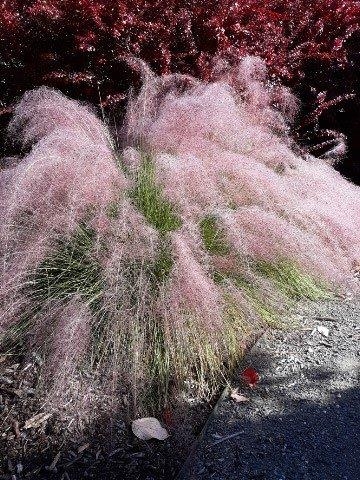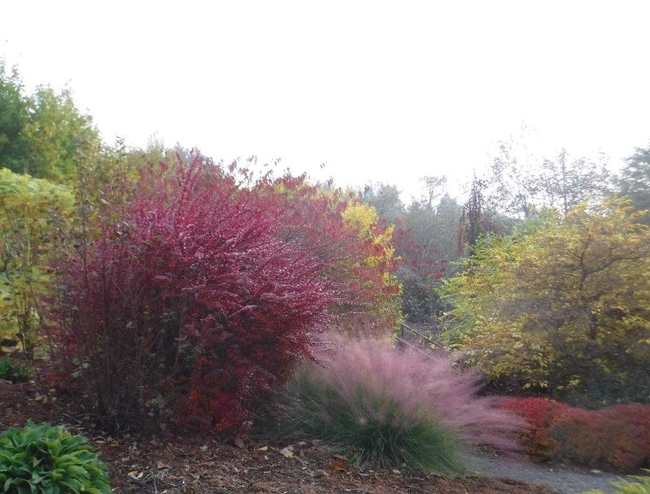
Muhlenbergiacapillaris is particularly spectacular after a rain with rain drops glistening in the sun. The inflorescences of Pink Muhly Grass begin pink in late summer to early fall and slowly fade to tan for a long period of interest and beauty. Muhlenbergiacapillaris (Pink Muhly Grass) is extremely hardy and easy to grow. It grows in clumps with long sharp-edged foliage blades to 3 feet.
It is native to the Eastern half of the United States from Texas to Florida. It is naturally found in forests and along coastal dunes and is very drought tolerant once established.
At Humboldt Botanical Garden we cut it back hard in spring, otherwise it requires little care. It is not picky about soil but does not like wet feet. It will grow on rocky or clay soils if you raise the planting location by mixing in a lot of organic matter to form a mound.
If planting several together space them 2 feet apart in as much sun as you can find. After 3 or 4 years you will need to dig, divide and replant then you will have some divisions to share with your friends, family and neighbors.
Muhlenbergia capillaris (Pink Muhly Grass) has been a well behaved grass at Humboldt Botanical Garden and in our home garden Some other grasses like Nassella tenuissima, (Mexican feathergrass) can be the neighborhood bully, seeding itself about your garden and your neighbors' gardens. Nassella tenuissima, (Mexican feathergrass), is an emerging invasive plant in California according to the University of California Master Gardener program. “An invasive plant is an introduced species that out-competes native plants and wildlife for space and resources, causing harm — and is often difficult to remove or control. It is an extremely vigorous plant and will likely spread out of its designated place in the garden. This plant can crowd out pasture species as well as native grasses in coastal areas.”
June Walsh is Co-Curator of the Moss Family Temperate Woodland Garden and a University of California Cooperative Extention trained Master Gardener
Sources: https://ucanr.edu/blogs/blogcore/postdetail.cfm?postnum=14457 https://www.invasiveplantatlas.org/subject.html?sub=18755 https://piedmontmastergardeners.org/article/ornamental-grasses-easy-beautiful-and-invasive/ https://ask.extension.org/questions/173088
